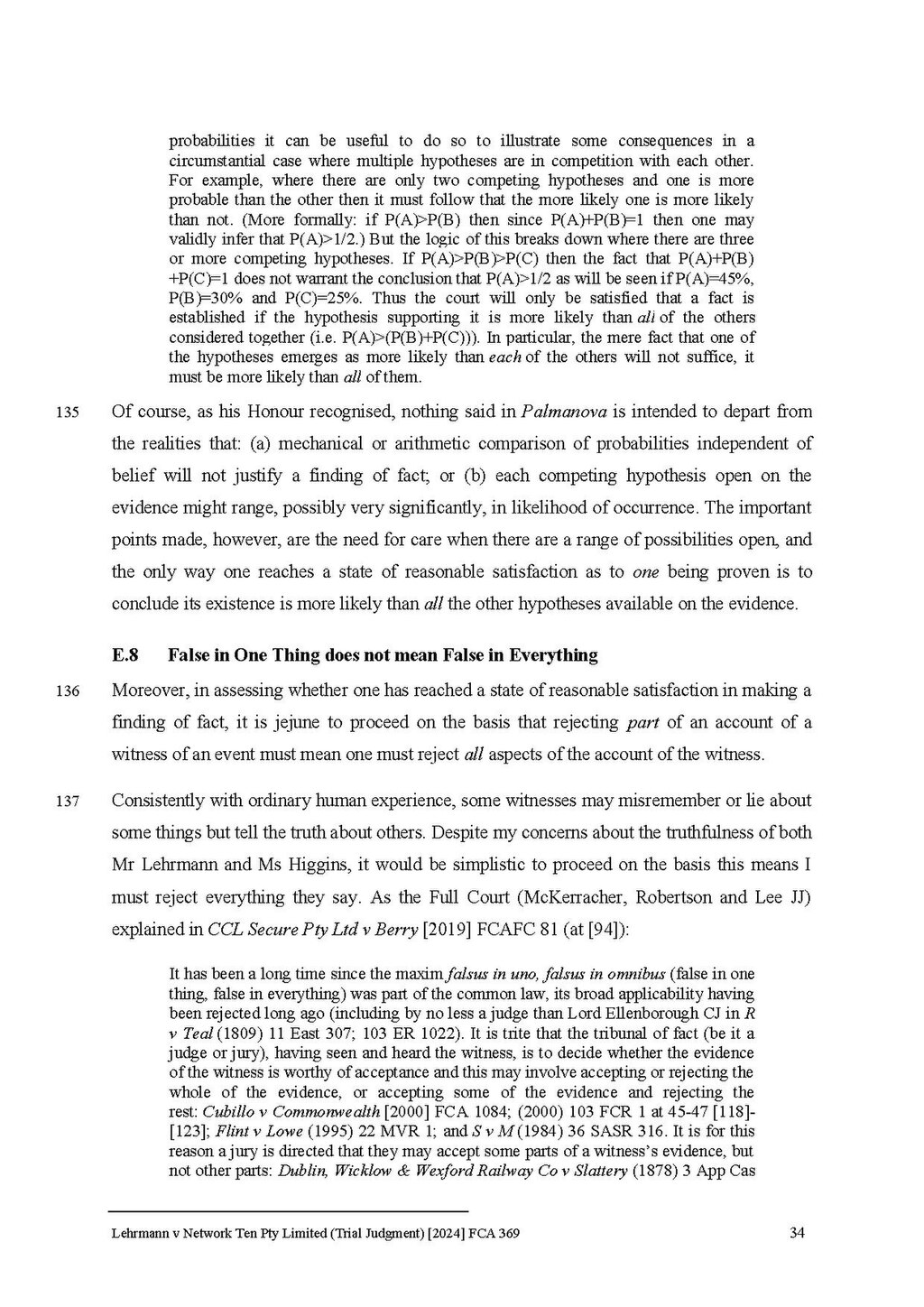probabilities it can be useful to do so to illustrate some consequences in a circumstantial case where multiple hypotheses are in competition with each other. For example, where there are only two competing hypotheses and one is more probable than the other then it must follow that the more likely one is more likely than not. (More formally: if P(A)>P(B) then since P(A)+P(B)=1 then one may validly infer that P(A)>1/2.) But the logic of this breaks down where there are three or more competing hypotheses. If P(A)>P(B)>P(C) then the fact that P(A)+P(B)+P(C)=1 does not warrant the conclusion that P(A)>1/2 as will be seen if P(A)=45%, P(B)=30% and P(C)=25%. Thus the court will only be satisfied that a fact is established if the hypothesis supporting it is more likely than all of the others considered together (i.e. P(A)>(P(B)+P(C))). In particular, the mere fact that one of the hypotheses emerges as more likely than each of the others will not suffice, it must be more likely than all of them.
135 Of course, as his Honour recognised, nothing said in Palmanova is intended to depart from the realities that: (a) mechanical or arithmetic comparison of probabilities independent of belief will not justify a finding of fact; or (b) each competing hypothesis open on the evidence might range, possibly very significantly, in likelihood of occurrence. The important points made, however, are the need for care when there are a range of possibilities open, and the only way one reaches a state of reasonable satisfaction as to one being proven is to conclude its existence is more likely than all the other hypotheses available on the evidence.
E.8False in One Thing does not mean False in Everything
136 Moreover, in assessing whether one has reached a state of reasonable satisfaction in making a finding of fact, it is jejune to proceed on the basis that rejecting part of an account of a witness of an event must mean one must reject all aspects of the account of the witness.
137 Consistently with ordinary human experience, some witnesses may misremember or lie about some things but tell the truth about others. Despite my concerns about the truthfulness of both Mr Lehrmann and Ms Higgins, it would be simplistic to proceed on the basis this means I must reject everything they say. As the Full Court (McKerracher, Robertson and Lee JJ) explained in CCL Secure Pty Ltd v Berry [2019] FCAFC 81 (at [94]):
It has been a long time since the maxim falsus in uno, falsus in omnibus (false in one thing, false in everything) was part of the common law, its broad applicability having been rejected long ago (including by no less a judge than Lord Ellenborough CJ in R v Teal (1809) 11 East 307; 103 ER 1022). It is trite that the tribunal of fact (be it a judge or jury), having seen and heard the witness, is to decide whether the evidence of the witness is worthy of acceptance and this may involve accepting or rejecting the whole of the evidence, or accepting some of the evidence and rejecting the rest: Cubillo v Commonwealth [2000] FCA 1084; (2000) 103 FCR 1 at 45–47 [118]–[123]; Flint v Lowe (1995) 22 MVR 1; and S v M (1984) 36 SASR 316. It is for this reason a jury is directed that they may accept some parts of a witness's evidence, but not other parts: Dublin, Wicklow & Wexford Railway Co v Slattery (1878) 3 App Cas
